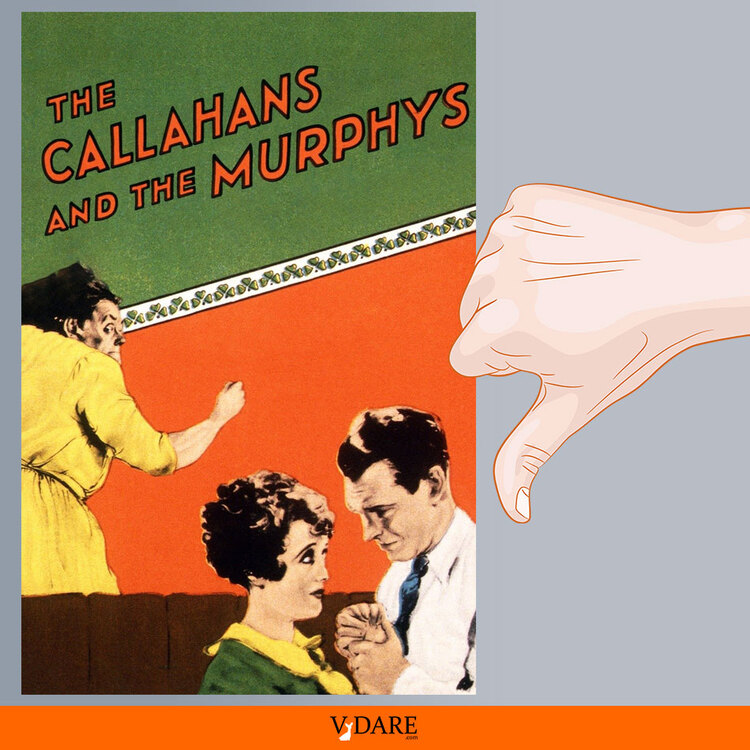The famous saying about old-time Hollywood movies is that they were made by Jews for Catholics about Protestants.
One time Protestants tried making a silent movie about Catholics, the 1927 silent comedy The Callahans and the Murphys, directed by George Hill, with a screenplay by his future wife Frances Marion, it didn’t work out so well. From the New York Times news section:
Down the Rabbit Hole in Search of a Few Frames of Irish American History
The silent film “The Callahans and the Murphys” was pulled after an uproar over stereotyping. What happened next tantalized one fan of old movies.
By Dan Barry
March 15, 2024
… I learned that [Marie} Dressler’s success had come after decades of triumph and travail.
Marie Dressler was the weirdest movie star of the Depression: a fat 60-something lady.
By 1927 she was nearly broke and considering a housekeeping job when a dear friend, the celebrated screenwriter Frances Marion, offered Dressler a lead role in her next picture: “The Callahans and the Murphys,” a silent comedy so controversial, I read, that it was yanked from circulation and is now considered lost.
This was back when women were much more dominant in screenwriting: Frances Marion wrote 325 movies and won two Academy Awards. When Jews took the movie business away from Protestants like D.W. Griffith, the business became much more male chauvinist, but nobody mentions that.
The plot, I learned from news accounts and MGM records, centered on two tenement Irish families in a place called Goat Alley, where, a title card explained, “a courteous gentleman always takes off his hat before striking a lady.” Mrs. Callahan (Dressler) and Mrs. Murphy (Polly Moran) are quarreling friends with large, commingling broods; the Callahans’ daughter is dating Murphy’s bootlegger son. There are fleas and chamber pots and thumbed noses and a St. Patrick’s Day picnic that—hold on to your shillelagh!—devolves into a drunken brawl.
Released in June 1927, the comedy initially received encouraging reviews, with several critics singling out Dressler’s performance. Her career now revived, she would go on to win the hearts of America—and an Academy Award for best actress (for her role in the 1930 comedy-drama “Min and Bill”)—before dying at 65 in 1934.
But several Irish American organizations lodged complaints about the depiction of Irish life as one long, intoxicated slugfest. MGM blithely defended the film as good-natured fun, only to realize that an intractable Hibernian grudge was taking hold, as this internal studio telegram reflects:
VARIOUS IRISH SOCIETIES HAVE BEEN COMPLAINING DURING LAST WEEK TO VARIOUS BRANCH OFFICES REGARDING NATURE CALLAHANS MURPHYS — STOP — OBJECTIONS NOW HAVE REACHED STAGE WHERE WE MUST DO SOMETHING MEET THEIR DEMANDS.
Worried about its investment, MGM made several cuts and changes to stem the growing outrage among the country’s Irish Catholics—who, it should be noted, already felt under attack by a resurgent and powerful Ku Klux Klan that mocked their faith and questioned their patriotism.
References to Goat Alley and domestic-violence etiquette were cut. No more fleas, either, or comical renderings of the Catholic sign of the cross. And a lot less drinking.
In addition, a title card was added to share the malarkey that the Callahans and Murphys represented the “fast-fading old school families to whom the world is indebted for the richest and rarest of wholesome fun and humor.”













